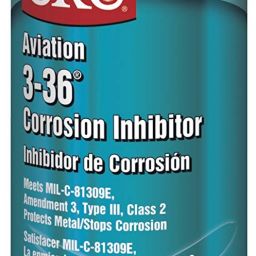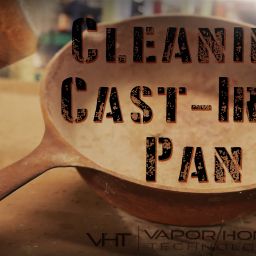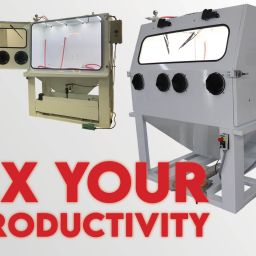How to Rid Your Parts of Abrasive
Did you just finish vapor honing your part? Well, before you put it back on your projects, we highly advise you to make sure all the abrasive is out of your parts. Lets get into why and how you should rid your parts of abrasive.
Why Do You Need to Rid Your Parts of Abrasive?
So, why do you need to rid your parts of abrasive? Leftover abrasive can get into nooks and crannies that you do not want it in and start wearing these areas down. This is a huge issue because it can cause significant damage to your parts.
Leftover abrasives can also block passageways. This can cause your machine to dysfunction or not connect properly to the rest of your machine. Leftover abrasive can wear down the inside of your parts and hurt its functionality and the functionality of the rest of your machine. So, how do you rid your parts of abrasive?
Rinse Your Parts
One of the easiest measures you can take to rid your parts of abrasive, is to rinse it down. Some of our machines come with an internal rinse that is perfect for this. All you got to do is simply hose down the abrasive after blasting, and that should get a majority of the abrasive out. For a more effective result we recommend rinsing with an external water source, letting it dry, and then rinsing and drying again. By doing that you make sure all the abrasives are out. However, you can also rinse your part out first and then try one of these other options.
Dip Tank
After rinsing your part, you can place it in a dip tank to get rid of the rest of the abrasive. A dip tank is an inexpensive tub of water that you place your parts in. Once your part is in the water, you will want to maneuver it around the tub. By doing so, you will dislodge the abrasive and suspend it in the water. That way when you pull your part out the abrasive stays in your water instead of on your part.
Why should I use this? When you rinse with a hose or internal rinse, you sometimes push the abrasive back into the crevices and passageways that you do not want it in. By using a dip tank, or similar cleaner you shake the abrasive out so it flows out, instead of being pushed back in.
Ultrasonic Cleaner
A similar but more high-tech form of a dip tank that rids your parts of abrasive is the ultrasonic cleaner. An ultrasonic cleaner is a tub of water that vibrates. Since it vibrates, you do not have to manually dispel the abrasive from your parts. With this hands-off approach your productivity rate increase. However, so does the price tag. An ultrasonic cleaner is a hand-free cleaner that is just as effective as the dip tank but has a larger price tag.
Vibratory Tank
In the same group as the dip tank and the ultrasonic cleaner, is the vibratory tank. This tank like the ultrasonic cleaner is a hands free way to rid your parts of abrasive. Since it is hand free your productivity once again increases. However, unlike the dip tank and the ultrasonic cleaner, this machine is more aggressive. Therefore, you get better results when using the vibratory tank. The vibratory tank is more aggressive than the other tanks leading to better results at ridding your parts of abrasive.
Hydroblast
You can also rinse your part down in the hydroblast. Unlike our internal rinse, this machine has a working PSI of 1700. That is a lot of air pressure, making it very efficient at ridding your parts of abrasive. Besides its high water pressure, it also comes with a filtration system. This is contrast to other parts washers that recirculate the water, and thus recirculate the abrasive.
While it does catch the abrasive, we recommend rinsing it down in your vapor honing cabinet first. That way the abrasive stays in the correct cabinet. A hydroblast will rid your parts of abrasive using its impressive high pressure water blasting ability.
Conclusion
Leftover abrasives can go into unwanted areas and cause damage and also prevent your part from connecting and working correctly with the rest of your machine. To prevent this, make certain you are rinsing your parts thoroughly after blasting. We recommend rinsing the parts with an external water source, using a dip tank, an ultrasonic cleaner, a vibratory tank, or a hydroblast. Make sure to dry your parts after blasting and inspect for abrasive. Remember, if you are concerned about abrasive in your parts, rinse and dry them again and again because it truly is better safe than sorry. For more information on how to effectively clean your parts call us at (828) 202-5563.








